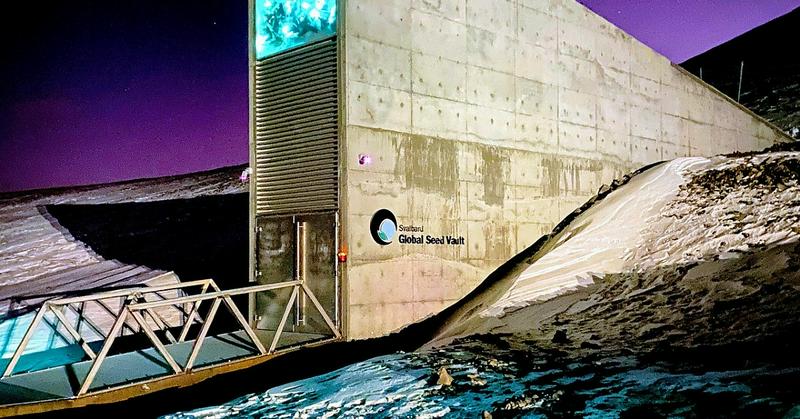The Svalbard Global Seed Vault
By | November 11, 2021

Tunneled into the icy tundra of Svalbard, Norway is a vault that holds the entire future of agriculture. Opened in 2008, the Svalbard Global Seed Vault is the first of its kind, a gene bank for collecting and preserving every single unique set of genes for the millions of varieties of crops on earth. Seed banks have been around since the 1920s, but many of them have gone under due to environmental disasters, war, and plain old lack of funding.
That's bad because once a crop goes extinct, it's gone forever, and we don't know what the future holds in terms of the environment. Some traits may fare better than others, but without the genetic data, there will be no way to breed crops in the direction humanity needs them to evolve. For example, if you've ever heard someone born before the 1950s complain that bananas used to be sweeter and more flavorful, that's not just nostalgia goggles taken to biological extremes. They were literally eating different bananas, specifically the Gros Michel, which was nearly wiped out by the Panama Disease. Today, we eat stupid Cavendish bananas.

In the 1990s, Afghanistan almost lost all of their seed banks due to regional conflicts, and after the September 11 terrorist attacks, Professor Cary Fowler of the Norwegian University of Life Sciences became obsessed with the idea of creating a global seed vault somewhere remote where no war or natural disaster could touch it as a sort of backup for the world's gene banks. In 2004, he convinced the Norwegian government to fund a feasibility study for the project.
Quickly, they decided on Svalbard for its remoteness, peaceful political climate, and blisteringly cold ecological one. As the seeds needed to be preserved at –18 degrees Celsius (–0.4 degrees Fahrenheit), it helped to build the vault somewhere cold enough to keep the seeds frozen in the event of a blackout or other catastrophe. The location also allowed them to build directly into the side of a mountain, leaving only the entrance in the open air, which greatly reduced the need for security. In fact, the Svalbard Global Seed Vault has no permanent staff at all, since anyone who wants to break in would first have to defeat the hellish terrain and possibly a polar bear or two.

The Norwegian government approved the Vault, and after four years of construction, it opened in 2008. Although the archive was intended stand for thousands of years, its first withdrawal occurred much sooner than expected. By 2015, due to the war in Syria, much of the nation's crops and seed banks were lost, including a special kind of drought-resistant wheat that scientists at Aleppo had cross-bred to insure the region's agricultural future. Luckily, they'd backed up 80% of their work in Svaldbard, allowing them to resume their research in safer areas, like Morocco.
Its creators believed the Vault would hold up to even the most extreme predictions of climate change, but in 2017, the permafrost around the entrance melted and flooded the front hallway. It refroze as it traveled deeper into the mountain and fortunately didn't ruin any of the seeds, but much of the electrical equipment had to be replaced and moved. The building has since been waterproofed.
The Vault reopened in 2020 just in time to take in a huge haul of seeds, placing the number of unique varieties in its archive to a little over one million. Crop Trust, a nonprofit whose goal is to protect the future of agriculture, has raised $360 million to secure the Vault's finances for at least the next few hundred years. Hopefully, the future of humanity will never depend on trekking to an icy door in the Arctic archipelago to save ourselves from mass starvation, but if the need arises, we can all rest assured that the option is there.

